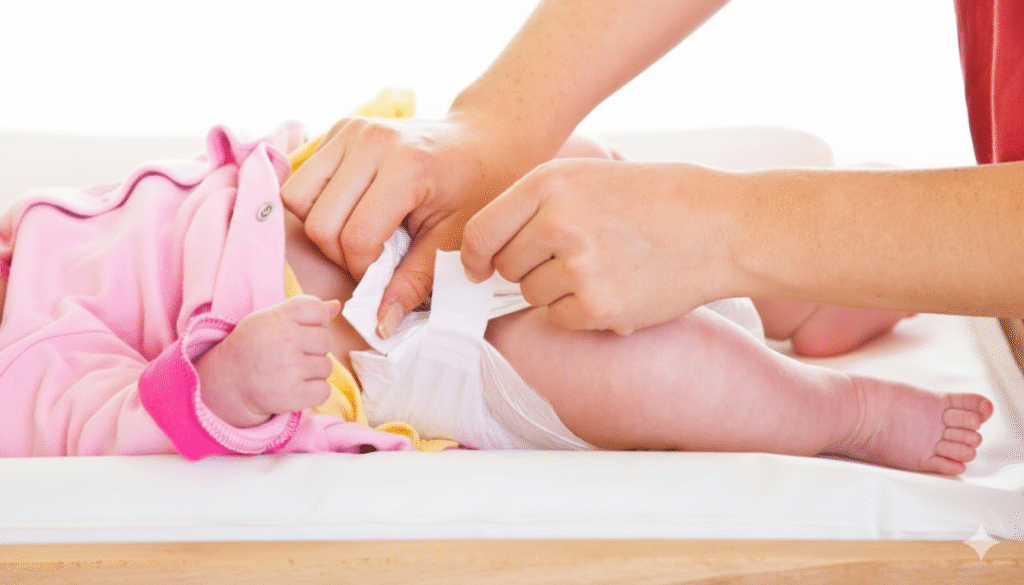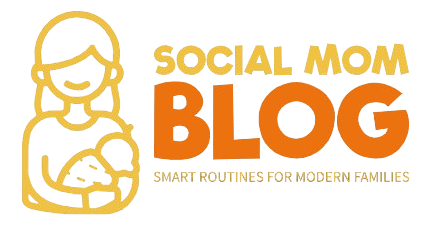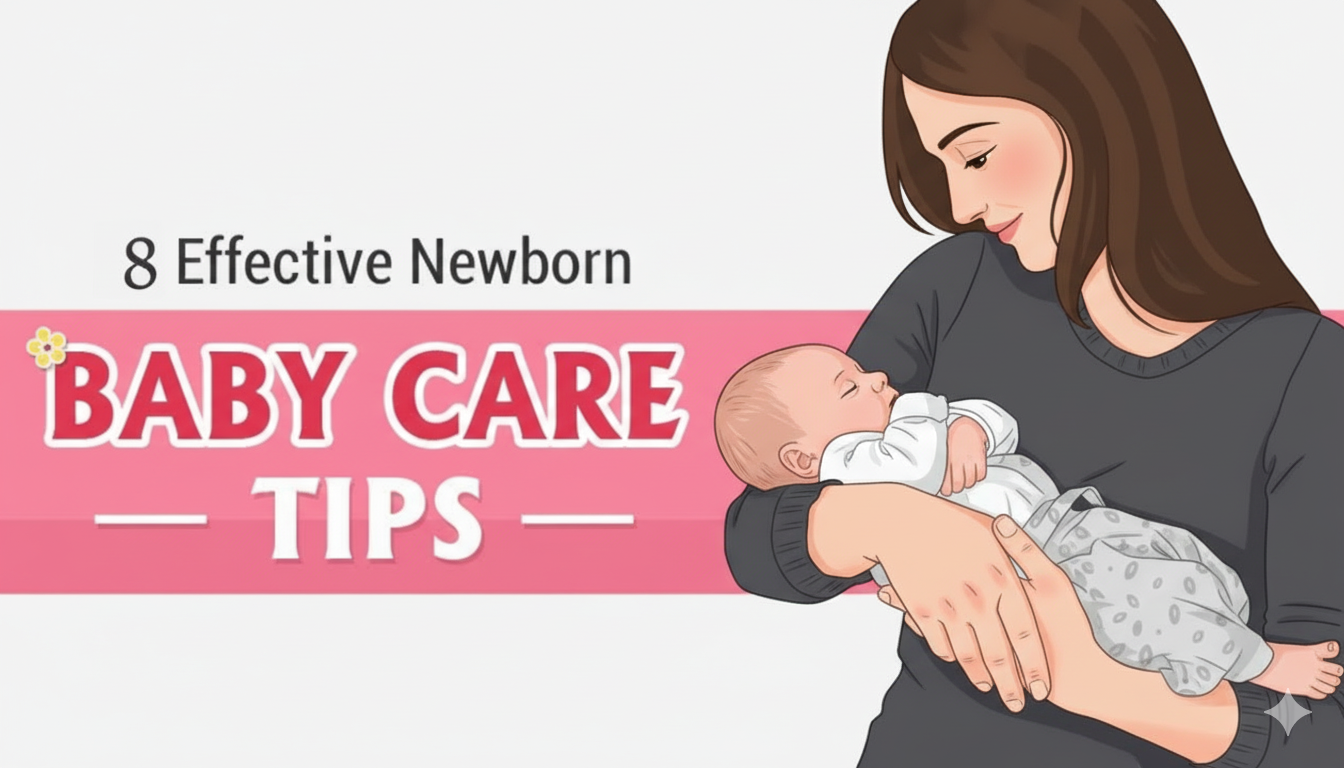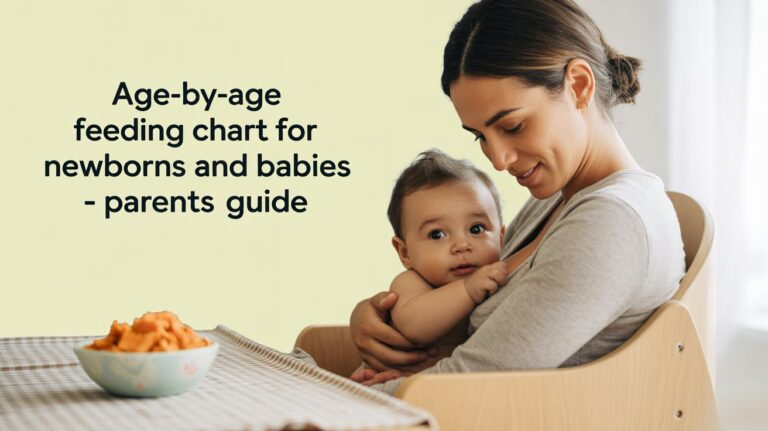Newborn Baby Care: 7 Lifesaving Tips for New Parents
Bringing your baby home for the first time is unforgettable, exciting, emotional, and honestly, a little intimidating. One moment you’re soaking in the snuggles, the next you’re Googling “how often should a newborn eat?” at 2 AM. That’s where understanding newborn baby care fundamentals comes in.
Every baby is different, but with the right support and know-how, including our Best Postpartum Yoga Poses to Heal, you’ll start feeling more prepared, more settled, and a whole lot more at ease.
This guide walks you through everything you need to know in those early weeks and months without judgment, and with plenty of practical tips that actually help. Keep reading — we’ve got your back from the first diaper change to that first smile.
Top 5 Key Takeaways for Newborn Care
Proper baby care and newborn infant care—including hygiene, regular pediatric visits, and safe routines—support physical health, immune protection, and developmental milestones. Even small practices like handwashing and monitoring diaper output are essential in the care of a newborn.
Responsive care for newborns, such as holding, talking, singing, and comforting, strengthens neural connections, promotes emotional regulation, and lays the foundation for language and social skills. Learning how to take care of a newborn also encourages trust and attachment.
Whether breastfeeding or formula feeding, feeding on demand, tracking wet/dirty diapers, and establishing safe sleep practices are crucial elements of newborn care. Understanding how to care newborn helps ensure your infant thrives and develops healthy routines naturally.
From swaddling and safe sleep setups to infant CPR awareness and avoiding shaken baby syndrome, prioritizing care for infant safety protects your baby. Following proper care of the infant guidelines gives parents peace of mind and confidence.
Learning how to take care of a newborn and basic care for newborn routines, setting boundaries, asking for help, and looking after yourself allows you to stay calm, connected, and present. Effective baby care benefits both parents and newborns, making every moment more enjoyable.
Why Is Newborn Baby Care So Important?
Caring for a newborn isn’t just about changing diapers and midnight feeds — it’s about setting the stage for lifelong health, growth, and connection.
1. Physical Health & Immune Protection
Newborns are born with fragile immune systems, making them more prone to infections. That’s why basic routines — such as washing your hands, sanitizing bottles, and keeping sick visitors at bay — aren’t just suggestions; they’re vital.
According to the American Academy of Pediatrics (AAP), proper newborn hygiene and routine pediatric visits help catch early signs of illness, support safe sleep practices, and ensure timely vaccinations. These habits reduce the risk of serious issues in those first few vulnerable months.
A quick handwash can stop common infections like RSV and colds from spreading to your baby.
2. Brain Development & Bonding
Early interaction shapes your baby’s brain. Holding, rocking, singing — these moments are more than cute. They boost neural connections, help regulate emotions, and lay the groundwork for learning and social skills.
The CDC highlights that responsive care — like feeding when hungry or calming when fussy — builds trust and promotes infant bonding, which can impact everything from language development to emotional regulation later in life.
Pro Tip: Babies’ brains grow over 1 million neural connections every second in their first year — and warm, loving care fuels that growth.
3. Physical Growth & Milestone Tracking
From day one, your baby is on a rapid growth path. Proper nutrition (breast milk or formula), enough sleep, and regular checkups help monitor progress.
Tracking key metrics — like baby weight gain milestones, length, and head circumference — helps your pediatrician make sure your baby is thriving, and can be guided by our Baby Cognitive Development Milestones resource.
If issues like feeding trouble, diaper rash, or delayed infant milestones come up, early support can make a big difference.
Tip: The AAP recommends newborn visits at 3–5 days, 1 month, and 2 months — then regularly throughout year one.
4. Public Health Impact
Newborn care also matters at a global scale. The World Health Organization (WHO) stresses that newborn deaths are preventable through simple care practices like:
- Keeping babies warm (thermal care)
- Early skin-to-skin contact
- Clean umbilical cord care
- Exclusive breastfeeding support
These practices have already saved millions of lives, especially in underserved areas.
5. Building Confidence in New Parents
Let’s not forget the parents. Learning the basics of newborn sleep routines, safe swaddling, how to feed (and burp), and spot signs of illness gives you something every new parent craves: confidence.
The better prepared you are, the more connected, calm, and present you can be. That calm energy? Your baby feels it too.
First Weeks with Baby: How to Care for Your Newborn

Caring for your newborn means more than just feeding, diapering, and soothing — it also means taking care of you. Those early days can feel exhausting and emotional, especially if you’re healing from birth and adjusting to your new life. If you’re still adjusting after delivery, check out our Pregnancy and Postpartum Wellness guide for emotional and physical recovery tips.
It’s okay — and often necessary — to ask for help. Friends and family may offer support with meals, chores, or baby holding so you can rest. Even if you don’t always agree with their parenting advice, their presence can still be a comfort. Simple routines like postpartum yoga poses can help relax sore muscles and reduce postpartum fatigue.
💡 Health Tip: Anyone who holds or handles your baby should be up to date on their vaccines, wash their hands, and be free of any cold or flu symptoms. You can also try light pelvic floor exercises to gently rebuild your strength and support postpartum recovery.
And here’s something most new moms need to hear: It’s perfectly fine to set boundaries with visitors. If you’re feeling tired, anxious, or just not ready to have company, say so. Your well-being and your baby’s health come first.
Feeding Your Newborn: Breast or Bottle, It’s About Nourishment
One of the most essential parts of newborn care fundamentals is figuring out how you’ll feed your baby. Whether you choose breastfeeding, formula feeding, or a mix of both, what matters most is that your baby is fed, comfortable, and gaining weight.
According to the American Academy of Pediatrics (AAP), newborns should eat every 2–3 hours until they surpass their birth weight and establish a consistent growth pattern. Use this feeding chart for newborns and babies to track feeding frequency and amounts during the first few weeks.
Breastfeeding Basics: Comfort, Latch & Milk Supply
If you’re breastfeeding, the first few days are all about learning and adjusting for both you and your baby. Some moms experience discomfort, especially with early latch issues or engorgement.
Here are a few real-world tips to help:
- Use a warm compress to relieve blocked ducts and help colostrum or milk flow more easily.
- Try a cold compress for nipple soreness after feeding.
- It’s completely okay to nurse on demand — this helps meet your baby’s needs while increasing your milk supply naturally.
- Avoid pacifiers or bottles until breastfeeding is well established (usually around 3–4 weeks). If you’re concerned about low milk flow, discover natural ways to increase breast milk supply and maintain healthy feeding.
- Don’t hesitate to contact a lactation consultant (often listed in your hospital discharge paperwork) for help with latch techniques and milk production support.
Fun Fact: Hormones like prolactin and oxytocin regulate milk supply and bonding, both triggered during feeding and skin-to-skin contact. These close interactions also strengthen early baby cognitive development milestones, helping your little one learn and grow from your touch and voice.
Latching Help: Position, Technique & Hunger Cues
Breastfeeding doesn’t always “just happen.” Many newborns struggle to latch, and that’s completely normal. In fact, a poor latch can lead to fussiness, poor feeding, and gas or discomfort later. During these bonding moments, you’re also shaping key emotional and social development milestones that help your baby build trust and comfort.
Ask a nurse or lactation expert to guide you on:
- Positioning the baby’s body and mouth
- Identifying early hunger cues (rooting, sucking hands, turning head)
- When and how often to burp during a feed (every 5–10 minutes or when switching breasts)
If the baby becomes fussy mid-feed, pause to burp them. Trapped gas is a common cause of feeding discomfort.
Formula Feeding: What to Know
If you’re using infant formula, that’s okay too. It’s safe, regulated, and often necessary for various reasons (supply issues, health needs, or preference). Whichever feeding method you choose, remember that balanced holistic infant development focuses on nurturing both emotional and physical needs.
How Do I Diaper My Baby? What to Expect & Watch For

Let’s be real — diaper duty is going to be a big part of your day now. On average, newborns can go through 8 to 12 diapers in a single day, often having a bowel movement with nearly every feeding.
💩 Yes, that’s normal. Frequent poops and pees are actually a sign your baby is eating well and staying hydrated.
How Diaper Changes Help Track Feeding
If you’re unsure whether your baby is getting enough breast milk or formula, a quick way to check is by counting wet and dirty diapers.
- A healthy, well-fed newborn should have 6+ wet diapers and 3–4 dirty ones in 24 hours
- Wet diapers mean your baby is well-hydrated
- Dirty diapers help confirm healthy digestion
If you notice fewer diapers than expected, or your baby seems dehydrated (dry lips, dark yellow urine, less alert), reach out to your pediatrician for guidance.
Preventing Diaper Rash & Protecting Baby’s Skin
With so many changes a day, it’s no surprise that your baby’s delicate skin can get irritated. To help prevent diaper rash:
- Use a gentle, fragrance-free diaper rash cream after each change
- Pat, don’t rub — and let baby’s bottom air-dry when you can
- Use sensitive or water-based wipes to avoid irritation
- Change diapers promptly after poops to reduce skin breakdown
Tip: If your baby’s rash isn’t clearing up after a few days — or looks red, raw, or weepy — talk to your pediatrician.
Quick Diapering Checklist
Bathing Your Newborn: Safe, Simple, and Stress-Free
Giving your baby their first bath might feel a little scary, but you’re not alone. Many new parents feel nervous the first time, and that’s totally okay.
The good news? Your baby will get their first bath in the hospital, and it’s a great chance to watch the nurses, ask questions, and take a few mental notes.
When Can You Give a Real Bath?
You’ll need to wait until your baby’s umbilical cord stump falls off — usually around 1 to 2 weeks after birth — before giving a full tub bath. Until then, stick to gentle sponge baths every few days.
Sponge Bath Tips:
- Use warm (not hot!) water and a soft, clean washcloth
- Focus on key areas: neck folds, diaper area, underarms, eyes, and nose
- Keep your baby warm by wrapping them in a towel and uncovering one area at a time
- Always dry them thoroughly — moisture trapped in skin folds can cause irritation
Avoid soap with fragrances, dyes, or harsh chemicals. Look for gentle baby cleansers or pediatrician-recommended washes.
What About Baby Acne?
If your little one breaks out with tiny red bumps or whiteheads around 2–4 weeks old, don’t worry — it’s likely baby acne.
It’s caused by hormones passed from mom during pregnancy and usually clears up without treatment.
Here’s what to do (and not do):
- Gently wash baby’s face daily with warm water
- Use fragrance-free moisturizer if the skin seems dry
- Don’t scrub, squeeze, or use acne products
- Avoid oily lotions that can clog pores
Pro Tip: A gentle, hypoallergenic baby lotion can help keep your newborn’s skin soft without irritation.
Newborn Sleep: What’s Normal and How to Help Baby Rest Safely
If you’ve ever heard the phrase “sleep like a baby,” now’s your chance to find out what that really means. Newborns sleep a lot — but not always when you’d like them to.
In the first few weeks, expect your baby to sleep about 16 to 18 hours a day, in short chunks around the clock. This is completely normal and part of healthy newborn sleep patterns. Most of that sleep won’t be at night (yet), because babies aren’t born knowing the difference between day and night.
Understanding the Newborn Sleep Schedule
A typical newborn sleep schedule includes:
- Sleep periods lasting 2 to 4 hours at a time
- Wake windows for feeding, changing, or short cuddles
- No consistent nap schedule in the first month
- Sleep that’s spread across both day and night
So, how many hours does a newborn sleep? On average, about 8–9 hours during the day and another 8 hours at night, but not all at once. This fragmented pattern is caused by their developing internal clocks and small stomachs; they need to wake often to eat.
Where and How Should a Newborn Sleep?
For the first six months, the AAP (American Academy of Pediatrics) recommends keeping your baby in your room — but not in your bed. Instead, place your baby in a bassinet, mini crib, or full-size crib near your bed.
So, how should a newborn sleep? Safely. Follow these basic rules:
- Always place your baby on their back to sleep
- Use a firm, flat mattress with a tight-fitting sheet
- No pillows, blankets, or stuffed animals in the crib
- Keep the room cool and quiet for better rest
- Choose a breathable mattress for airflow and safety
Whether you use a bassinet or go straight to a crib, make sure your sleep setup follows all safe infant sleep guidelines. Products like the Newton Baby Crib Mattress are designed with breathable materials that support better airflow and peace of mind.
How to Get Your Newborn to Sleep at Night
Want to know how to get a newborn to sleep at night? You’re not alone. Most babies don’t settle into longer stretches of night sleep until around 6–8 weeks.
You can help shape better infant sleep habits by:
- Keeping lights dim and voices soft during night feedings
- Letting in daylight during the day to set a circadian rhythm
- Avoiding overstimulation before naps and bedtime
- Following a simple pre-sleep routine (diaper, feed, swaddle, rock)
And yes — how to make a newborn sleep sometimes comes down to recognizing their sleep cues (yawning, eye rubbing, fussing) and offering a quiet space before they become overtired.
How Can I Bond With My Baby?
Bonding with your newborn doesn’t have to be complicated. The little moments — your voice, your touch, your warmth — are what help your baby feel safe. And when babies feel safe, they settle more easily.
Infant Massage: Gentle Touch That Builds Trust
Massage is one of the simplest ways of bonding with infants. It helps your baby relax, feel secure, and may even support growth, especially in preemies or babies with health issues. Ask your pediatrician about safe infant massage techniques or books you can follow at home.
Keep your touch soft and slow — a baby’s body is delicate. You’re not aiming for deep pressure. Instead, you’re giving comfort through connection. These daily moments also strengthen your bond with your newborn, even if you’re still learning what each cry or wiggle means.
Sounds Babies Love
Bonding with your infant often starts with your voice. Talk to your baby, babble, sing softly, or just hum. Babies are naturally drawn to human voices, especially yours. You can also play gentle music, shake a soft rattle, or hang a musical mobile nearby.
Some babies are extra sensitive to sound or light. If your baby startsle often, cries more than expected, or turns away during play, lower the volume and keep the lights dim. That calm environment can help your baby feel more at ease, and it helps with bonding with newborns who need a slower pace.
Swaddling for Comfort and Sleep
Swaddling is a great way to soothe fussy babies in the early weeks. It gives your newborn a cozy, snug feeling, similar to the womb. It can also help reduce the startle reflex, which often wakes babies during sleep.
Here’s how to do it safely:
- Lay a thin blanket flat and fold down one corner.
- Place your baby face-up with their shoulders just below the fold.
- Bring the left corner over the body and tuck it under the back, under the right arm.
- Pull the bottom corner up over the feet and tuck it near the chest (but never too tight).
- Wrap the right corner across and tuck under the back on the left side.
Your baby’s hips and knees should be slightly bent and turned out. Swaddling too tightly around the legs can raise the risk of hip dysplasia.
Always leave enough space between the chest and blanket for easy breathing. If you can slide your hand between the wrap and your baby’s chest, you’re good.
Stop swaddling when your baby shows signs of rolling over — usually around 2 months. Rolling while swaddled can raise the risk of SIDS.
Newborn Safety Tips Every Parent Should Know
Your baby’s safety comes first — always. These simple tips help keep your newborn protected at home, during naps, and while visitors are around:
- Start babyproofing early. Cover outlets, secure cords, and keep anything sharp or breakable out of reach.
- Limit outside contact. Avoid letting strangers hold or kiss your baby in the early weeks.
- Sanitize your hands before touching. Ask friends and family to wash up or use sanitizer before picking up your little one.
- Watch for choking risks. Keep tiny items like buttons, coins, and toy parts far from your baby’s hands and mouth.
- Never leave your newborn alone. Not during naps, baths, or on the changing table — even for a second.
- Back is best for sleep. Always place your baby on their back in a firm, flat crib with no blankets or stuffed animals.
- Use extra caution on elevated surfaces. If you’re changing your baby on a table or couch, keep one hand on them at all times.
- Know the signs of distress. If your newborn is breathing fast, flaring their nostrils, or struggling to catch a breath, call your doctor right away.
👉 Consider taking a newborn CPR and first aid class. It’s one of the smartest ways to prepare for emergencies — just in case.
Never Shake Your Baby — What to Do Instead
Babies cry. Sometimes a lot. But no matter how tired or overwhelmed you feel, never shake a baby. A newborn’s skull is still soft, and shaking even for a few seconds can cause brain damage, blindness, or death. This is called Shaken Baby Syndrome (SBS), and it’s 100% preventable.
If you’re reaching your limit:
- Place your baby safely in their crib or bassinet.
- Step away for a few minutes. Go to another room. Take deep breaths.
- Call a trusted friend, partner, or family member for backup.
- If you need help, ask for it. There’s no shame in needing a break. You’re human.
Even just one hour of rest can make a huge difference. Your well-being matters too, because calm parents are better able to care for crying babies.
When Should You Call the Pediatrician?
Crying is normal. It’s how newborns tell you they’re hungry, tired, or need a change. But sometimes, their cries (or other signs) can mean something more serious. Here’s when to call your baby’s doctor:
- Fever of 100.4°F (38°C) or higher, especially in babies under 2 months old
- Refusing to feed or not waking up for feedings
- Crying non-stop or seeming impossible to soothe
- Red or swollen rash anywhere on the body
- Redness, oozing, or swelling around the umbilical cord stump
- Painful bowel movements — if your baby cries or strains a lot when pooping
- Tight, bloated tummy (also called a distended abdomen)
If something feels “off,” trust your gut. You know your baby best. When in doubt, it’s always okay to check in with your pediatrician — even if it turns out to be nothing.
FAQs
How many hours does a newborn sleep per day?
Most newborns sleep 14 to 17 hours a day, split across short naps and nighttime sleep. It’s normal for them to wake every 2–3 hours for feeding, especially in the first few weeks.
How often should I feed my newborn?
Feed your newborn every 2–3 hours, whether breastfeeding or formula feeding. That’s about 8–12 times in 24 hours until they regain their birth weight and grow steadily.
When should I worry about my newborn’s crying?
Crying is normal, but call your doctor if your baby cries non-stop, can’t be soothed, has a fever (100.4°F or more), or shows signs of illness like refusal to eat or lethargy.
How do I know if my newborn is getting enough milk?
Watch for 6+ wet diapers a day, steady weight gain, and contentment after feeding. If your baby seems fussy, sleepy, or feeds too briefly, talk to your pediatrician.
When can I give my baby their first bath?
Wait until the umbilical cord stump falls off (usually around 1–2 weeks). Until then, sponge baths every few days are enough to keep your newborn clean.
Is swaddling safe for newborns?
Yes—if done correctly. Swaddle with hips loose, arms snug, and face uncovered. Stop swaddling when your baby starts to roll over, usually around 2 months.
What’s the safest way for a newborn to sleep?
Always place your baby on their back in a firm, flat crib with no loose blankets, toys, or pillows. This reduces the risk of SIDS (Sudden Infant Death Syndrome).
What are the common signs of infant gas or reflux?
Your baby may arch their back, cry after feeding, spit up frequently, or act uncomfortable. Burping during and after feeds can help reduce these symptoms.
How do I care for my baby’s umbilical cord stump?
Keep the stump dry and exposed to air. Avoid submerging in water and let it fall off naturally, usually within 1–3 weeks. Call your doctor if you see redness, swelling, or foul odor.
What’s normal poop for a newborn?
Expect several diaper changes a day. Breastfed babies often have yellow, seedy poop, while formula-fed babies may have firmer, tan-colored stools. Any blood, mucus, or foul smell should be reported to your pediatrician.
Final Thoughts: You’ve Got This, One Day at a Time
Caring for a newborn can feel like the biggest challenge and the greatest joy—often at the same time. From late-night feedings to first smiles, every tiny moment matters. You don’t need to be perfect. You just need to be present, informed, and gentle with both your baby and yourself.
Whether you’re learning how to swaddle, wondering about sleep routines, or figuring out feeding cues, know this: every parent starts right where you are—and every baby is unique. Trust your instincts. Ask for help when you need it. And don’t forget to rest, hydrate, and breathe.
Bookmark this guide and come back anytime. You’re not alone—and you’re doing better than you think.
Resources:
- AAP Newborn Visit and Infant Health Assessment
- CDC RSV Vaccine Information
- Parent-Newborn Bonding and Attachment – OpenStax
- AAP Well Child Visit Schedule
- WHO Maternal and Newborn Health pages on www.who.int
- Cleveland Clinic: Vaccines To Get if You’ll Be With a Newborn
- Parenting Science: Infant Feeding Schedule
- AAP Safe Sleep Recommendations
- American Heart Association CPR CoursesAmerican Red Cross CPR Courses
- Prevent Shaken Baby Syndrome – CTF
- AAP Fever Guidelines for Infants




3 Comments